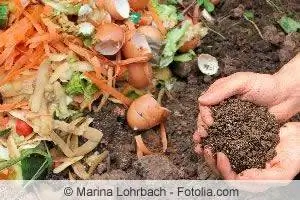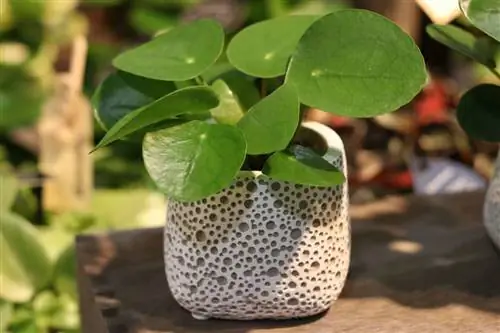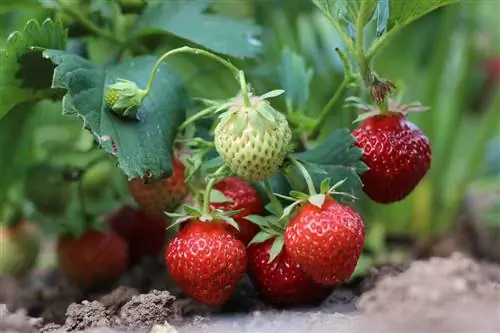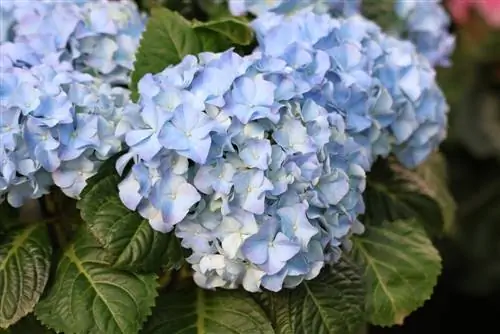- Author admin [email protected].
- Public 2023-12-17 03:39.
- Last modified 2025-01-24 12:45.
Horticulture and hobby gardeners currently need around ten million cubic meters of peat per year for potting soil with peat content. If the consumption behavior of industry and consumers does not change, the peatland resources could be exhausted in just 50 years and these most species-rich ecosystems could disappear forever (source Nabu). How can consumers influence the destruction of the peatlands? We present well-known alternatives to peat so that the planting season can begin without a guilty conscience.
What is peat?
Peat consists of slightly decomposed, preserved plant residues. Depending on the age of the peat, the plant remains are still clearly visible (younger peat) or no longer visible at all (very old peat). Peat always forms in wet areas with vegetation. If the vegetation in the wetland dies, it is not completely decomposed in the water. As new plants die again and again, pressure is created on the dead plant remains in the water, which preserves them in the absence of air. This is how peat is created.
What makes peat so valuable?
Moorland landscapes have been created over millions of years. In 1000 years, the peat layer in the moor grows by around one meter. Growth is between one and ten millimeters per year. It takes many millennia for a moor to form. However, the degradation of peat is currently progressing faster than the peat can grow back. In potting soil, peat stores water and is used to loosen the substrate. It makes the soil acidic, which is why peat is an ideal base for rhododendrons and azaleas. Peat is a very pure planting substrate without weed seeds. Last but not least, moors are home to unique flora and fauna that are lost when peat is mined.
Note:
Moors are not only drained but are completely destroyed through mining.
Peat mining as a climate killer
To produce peat, bogs in Germany and the B altic states and in Russia are drained. The CO2 stored over millions of years in the rotting plant parts is released. A 15 cm thick layer of peat stores so much CO2 that it corresponds to the storage capacity of a hundred-year-old forest on the same area. The CO2 emissions of drained moors are around six percent of the total CO2 emissions. Carbon dioxide, which is considered extremely harmful to the climate, contributes to global warming. The gas rises into the atmosphere and prevents geothermal heat from being radiated into the atmosphere in higher air layers. Only intact peatlands can continue to store carbon dioxide. Once peat is drained, it loses its storage capacity. Drained moors cannot be irrigated again.
Note:
The harmful CO2 also comes out of flower pots with potting soil containing peat.
Alternatives for peat
Commercially available potting soil contains peat in a proportion of between 80-90 percent. Peat is also found in organic potting soil. Peat has even been found in potting soils that have been declared “peat-free”. Consumers can limit peat degradation by mixing their own potting soil. Substitutes for peat are almost 100 percent the same as peat. As a rule, they cannot replace the function of the water storage tank 1:1.
Tip:
It's better to avoid peat and water the plants more often!
Known peat substitutes
- Garden compost has more nutrients than peat. It improves the soil and reduces the use of artificial fertilizers. Compost is produced in every garden or can be purchased from a composting facility. Another advantage of compost is that the soil does not acidify, as is the case when using peat.
- indenhumus consists of shredded composted bark. The substrate is available with or without a nutrient additive. Bark humus rots much more slowly than peat. It stores water and makes the soil slightly acidic.
- Compost made from leaves and spruce needles is a substitute for the acidic effect of peat. This means that plants that require acidic soil can also be planted without peat.
- Coconut fibers can replace peat very well. They store an enormous amount of water and only decompose slowly.
- Wood fibers are obtained from wood chips. They have a consistency like peat and are therefore a good water reservoir.
- Hemp fibers
- Chinese reed fibers
- Pumicestone
These additives store a lot of water and serve to improve and loosen the soil
Tip:
Wood fibers and pumice stones have proven to be effective substitutes for peat in growing soil. Compost and bark humus loosen the soil!
Coconut soil as a peat substitute
Coconut soil consists of crushed plant fibers from the coconut palm. It can completely replace potting soil with peat if sufficient nutrients are supplied through fertilizer, because coconut soil is nutrient-free. Coconut soil gets a loose consistency by adding chopped coconut shells. It is free of harmful substances, insect eggs, larvae and mold spores because it is sterilized and compressed before packaging. Coconut soil weighs a fraction of potting soil and is available from tablet size to seed pots to compact blocks. It stores large amounts of water and expands many times its volume when water is added.
Buy soil without peat
Potting soil that is made without peat is marked with the addition “peat-free” or “peat-free”. Some well-known manufacturers already have these on offer. It is suitable for hobby gardeners who cannot produce their own plant substrate. The Association for the Environment and Nature Conservation (Nabu) regularly publishes a purchasing guide for peat-free soils, which can be downloaded free of charge from the Internet.
Frequently asked questions
Is peat mining really that bad?
Yes, the brown areas of the former moors are already visible on Google Earth.
Can't the moor be replaced?
It takes a lot of time. To offset the climate balance, six times the amount of forest would have to be reforested and 100 years of waiting would have to be maintained.
Does peat also have negative aspects for the garden?
Yes, it contains hardly any nutrients and makes the soil acidic.
Where are the individual ingredients available to mix a plant substrate yourself?
Hardware stores and garden centers stock coconut, wood and hemp fibers. Expanded clay, split stone or pumice stone are also available from hardware stores. Compost with various ingredients is available packaged from regional waste disposal and composting plants. Ready-made coconut soil can be purchased at gardening stores or online.






